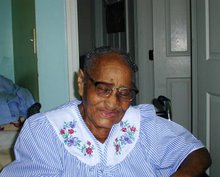
As many of you have heard in the radio or seen in the news, there has been a resurgence of bed bugs across the country. Their prevalence has known no boundaries and they show no signs of discrimination: not racial, not socioeconomic, not gender. Reports have been cropping up from state to state, city to city at every location from swanky neighborhoods to seedy hotels. As caregivers, it is important to understand this epidemic to ensure proper care for our loved ones.
I am sure you are wondering, "What are bedbugs?" According to Wikipedia, Bedbugs (or bed bugs) are small
nocturnal insects of the family Cimicidae that live by
hematophagy, that is by feeding on the
blood of
humans and other
warm-blooded hosts. Initially, the thought of a blood-sucking insect makes my skin crawl. However, upon further thought, there are other insects and animals that fall into this category, for example worms, leeches, ticks, and spiders. Fortunately, they are not the topic of this post.
Now that you understand what a bedbug is, it is important that you know what they look like. Susan C. Jones, in the article Bed Bugs explains their physical characteristics in detail. "Adult bedbugs are brown to reddish-brown, oval-shaped, flattened, and about 3/16 to 1/5 inch long." Additionally, Jones further describes the adults have small, stubby, nonfunctional wing pads. Considering that infestation requires procreation, it is also important to understand the physical characteristics of the nymphs or bed bug babies. Wikipedia explains newly hatched
nymphs are translucent, lighter in color and continue to become browner ...as they reach
maturity.
To keep your family and loved ones protected, it is important to know the signs that bed bugs are present for early detection. Assistant Professor Jones gives us some telltale signs to look for:
- blood stains from crushed bugs or rusty spots of excrement on sheets, mattresses, bed clothes, and walls
- fecal spots, eggshells, and shed skins within the vicinity of their hiding places
- offensive, sweet, musty odor from their scent glands if infestation is severe
For more information click here to read Bed Bugs in its entirety by Susan C. Jones. Additionally you can click here to connect to Wikipedia.
(Picture courtesy of Bed Bugs - article by Susan C. Jones)

.jpg)








No comments:
Post a Comment